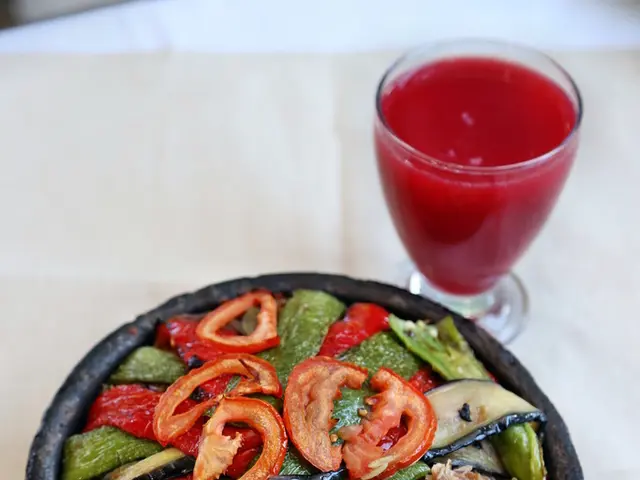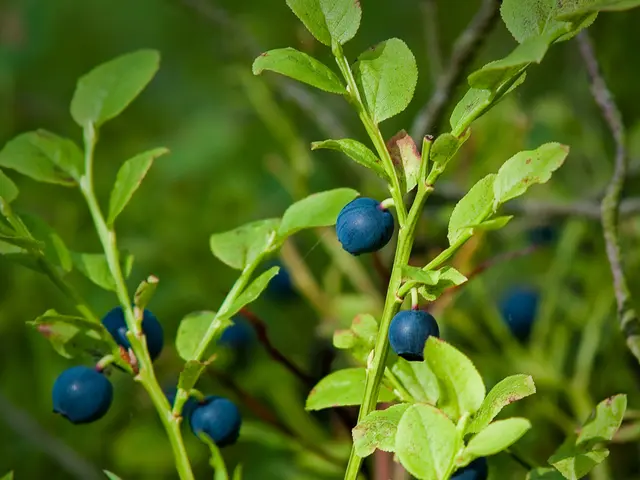Optimal Oil Surpasses Olive and Sunflower Oils, Outperforming Flax Oil as Well.
17:10 22 MayHarriet Davenport
Elevate your summer salad game with a zing of extraordinary flavor and nutritional boost! Swapping your regular sunflower oil for extraordinary pumpkin oil promises a tantalizing twist and loads of omega-3 fatty acids, vitamins, and antioxidants. But how do you separate the wheat from the chaff when it comes to selecting the healthiest oils amongst the plethora on store shelves?
Sleuthing Like Sherlock: Reading Product Labels Intuitively
Food safety maverick, Elena Demchenko, stresses the importance of naturalness and minimal processing when procuring oil for your salad. Caution is key: refined oils engineered for heat treatment don't cut it in salad dressings—most vital vitamins and nutrients fade away during production, rendering them useless.
Keep an eye (and mind) on labels: phrases like “first cold-pressed,” “Extra Virgin,” “Virgin,” or “first grade” are your green flags. These terms indicate the oil has not undergone any additional workouts and retains most of its beneficial components. On the other hand, terms such as “refined,” “deodorized” should be red flags—up to 80% of their precious properties vanish during production. Opt for dark glass or metal containers to shield the oil from its enemy light, which can disintegrate vitamins and significantly shorten shelf life.
Twin Strategy: Mixing Oils for Omega Symphony and Flavor Harmony
Many embrace the invisible cape of olive oil, thinking it's the one-stop solution. Experts, as it turns out, suggest combining various oils for a symphony of flavors and balanced fatty acids.
- Olive: a omega-9 powerhouse
- Sunflower: tends to be rich in omega-6
- Flaxseed and rapeseed: reign supreme in omega-3—a deficiency in almost every Russian residential diet
Modern diets, potentially skewed by fast food and processed products, tend to have an insurmountable amount of omega-6 fatty acids, while omega-3 remains scant. To restore the much-needed balance of beneficial fats, simply sprinkle a teaspoon of flaxseed or linseed oil into your daily meals. Remember to consume these oils within 2-4 weeks after opening to preserve their freshness; otherwise, they may turn on you and harm your body.
Next-Level Tips for Food Enthusiasts
- Sesame oil + honey: an exotic duo your Asian salads crave, but sesame is a beast of an allergen, so tread carefully!
- Pumpkin seed oil: magnifies roasted carrot's natural sweetness tenfold
- Flaxseed oil: a cold-only warrior—heating it results in the formation of nasty compounds
- Sediment: while it might make you wince, don't fret—it's a sign of naturalness and a phospholipids factory. Just make sure to shake the bottle first.
- Transparent packaging: a flashing siren—light is a rapid destroyer of vitamins, stripping them from their prime in a heartbeat.
Counterfeiting 101: Navigating the Olive Oil Minefield
In Europe, Extra Virgin is under strict surveillance by tasting commissions, but this luxury is rare in Russia. How do you avoid pitfalls?
- Look for the PDO mark on the label, like Toscano (this designates a protected origin).
- Check the bottling date: the product should be unfathomably fresh, no older than 12 months from production.
- Store oil like a vampire: shield it from the sun—even the best Extra Virgin goes south in the glow.
Oil Shelf Life: A Rapid Roundup
- Flaxseed: still going strong up to 4 weeks post-opening
- Pumpkin seed: frolics in the sunlight for up to 2 months
- Sunflower: struts its stuff for 3 months
- Olive: survives up to 6 months in a cool, dark den away from the stovetop
An easy test for freshness: dab a bit on a cloth. If there's only an oil stain left after an hour, the product is fresh. If a yellow ring appears, the oil has met its demise and must be kissing the dust.
Bonus: Whipping Up a Nutrient-Rich Homemade Mayonnaise
Have you scored a bottle of certified organic oil? Double-check the packaging to ensure compliance with GOST R 56508-2015—this means top-notch quality and purity. Need a dose of vitamins and a novel twist for your homemade mayonnaise? Try stirring in a spoonful of mustard oil. It adds an exciting kick and pumps up your recipe with extra vitamin D.
Always mindful choices about oil selection and mixing can take your salad's taste sensations to the next level—and contribute to the well-being of your body in a tantalizing way. Happy oliving!
- Incorporating pumpkin oil into your summer salads not only adds a unique flavor but also provides a wealth of health benefits, such as omega-3 fatty acids, vitamins, and antioxidants.
- A balanced diet rich in various oils can help ensure a symphony of flavors and a balanced intake of omega-3, -6, and -9 fatty acids. For instance, combining olive oil with sunflower, flaxseed, and rapeseed oils can provide a balanced intake of these essential fatty acids.
- To maintain the freshness and nutritional value of oils, it is important to store them properly. For example, flaxseed oil should be kept refrigerated and consumed within 4 weeks of opening, while sunflower oil can last for up to 3 months when stored properly.








